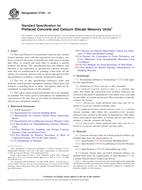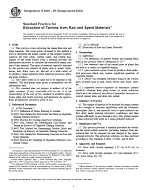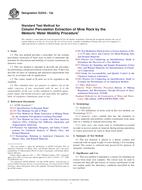1.1 This practice covers the compatibility of mixtures of turbine lubricating oils of the same ISO VG grade and type as defined by Specification D4304. The Tier 1 method compares the visual appearances of specific mixtures with those of the neat oils after storage at specified conditions.
1.2 If the current in-service oil is causing problems or if circumstances indicate the need for additional testing, a Tier 2 method compares selected performance properties of the mixture and its constituent oils.
1.3 The Tier 1 and Tier 2 methods can be used to evaluate new (unused) lubricant compatibility or the effects of adding new (unused) lubricant to in-service lubricant in the system.
1.4 This practice does not evaluate the wear prevention characteristics, load carrying capacity, or the mechanical shear stability of lubricants mixtures while in service. If anti-wear (AW), extreme pressure (EP), or shear stability are to be evaluated, further testing of these parameters may be required.
1.4.1 Tier 1 – Mixtures of the two constituent oils to be evaluated are prepared at specified proportions, stored in an oven at 65°C for 168 h, and then evaluated for changes in physical appearance.
1.4.2 Tier 1 – Mixtures of the two constituent oils to be evaluated are prepared at specified proportions, stored in an oven at 65°C for 168 h, and then evaluated for changes physical appearance and parameters detailed in 7.3.
1.5 Mixtures of the two constituent oils are evaluated in a primary testing protocol using the following standards:
| Appearance (Tier 1 and Tier 2) | Appendix X1 |
| Kinematic Viscosity | Test Method D445 |
| Acidity | Test Methods D664 and D974 |
| Pentane Insoluble | Test Method D893 |
| Copper Corrosion | Test Method D130 |
| Rust Prevention | Test Method D665 |
| Foaming Characteristics | Test Method D892 |
| Air Release Properties | Test Method D3427 |
| Water Separability | Test Method D1401 |
| Oxidation Stability Test | Note 1 |
1.5.1 For compatible mixtures, a supplemental (nonmandatory) testing scheme is suggested when circumstances indicate the need for additional testing the beyond Tier 2 primary recommended tests.
Note 1 – The oxidation stability test method should be selected based on the product type and in agreement with the lubricant supplier (see Appendix X2 for options). Unlike other tests described in this practice, the impact on oxidation stability may not be easily interpreted with a pass/fail rating. The user is encouraged to contact the lubricant supplier for assistance in the evaluation of the data.
1.6 Sequential or concurrent testing is continued until the test requestor or user is satisfied that the intent of this practice has been met. If any mixture fails the Tier 1 visual appearance method or any of the Tier 2 primary tests, when requested, the oils are incompatible. If all mixtures pass the Tier 1 or Tier 2 tests, the oils are considered compatible by those methods.
1.7 This practice applies only to lubricating oils having characteristics suitable for evaluation by the suggested test methods. If the scope of a specific test method limits testing to those oils within a specified range of properties, oils outside that range cannot be tested for compatibility by that test method.
1.8 This practice may be used to evaluate the compatibility of different types and grades of oil. However, it is not intended to evaluate such mixtures. The user is advised to consult with suppliers in these situations.
1.9 This practice does not purport to cover all test methods that could be employed.
1.10 The values stated in SI units are to be regarded as the standard. The values given in parentheses are for information only.
1.11 This standard does not purport to address all of the safety concerns, if any, associated with its use. It is the responsibility of the user of this standard to establish appropriate safety and health practices and determine the applicability of regulatory limitations prior to use.
Product Details
- Published:
- 10/01/2011
- Number of Pages:
- 6
- File Size:
- 1 file , 100 KB
- Redline File Size:
- 2 files , 180 KB


